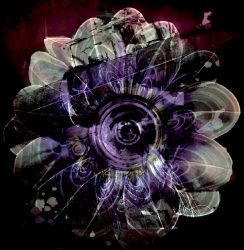
Oraison, written in 1937 by Olivier Messiaen for an ensemble of Ondes Martenots (an early electronic keyboard instrument using a ribbon and a ring to change pitch), was one of the first compositions written for electronic instruments exclusively.
But that historical fact is not the only thing that makes this music so special.
There’s a very special timeless, otherworldly, alienating feeling in this composition… even after 70+ year of technological advances.
It’s the perfect blend of a strange, previously unheard instrument, and the composition especially written to use it.
Recently, Richard Lainhart transcribed Oraison for his Buchla 200e synthesizer and Haken Continuum Fingerboard controller, and has shared this performance on YouTube and Vimeo. Because of the ‘tactile’ way of playing the Haken Continuum Fingerboard, the piece retains its original, almost human voice-like feeling.
I heartily recommend watching this video, all 10 minutes of it. It’s beautiful, and a fascinating sight to see Messiaen’s ‘Oraison’ performed on this unique instrument.
I might as well quote Richard Lainhart’s full comment (as sent to the ambient mailing list):
“From the time I first touched the Haken Continuum, I’d dreamed of using it to play a composition by Olivier Messiaen called “Oraison”. I first heard “Oraison” years ago as a student of electronic music, and had fallen in love with its simple, beautiful harmonies and profound sense of mystery.
“Oraison” is not only a lovely piece of music, but has historical interest too – it may be the first piece of purely electronic music written expressly for live performance.
“Oraison” (“prayer”) is from a suite of pieces for six Ondes Martenot called “Fete des Belles Eaux” (“Celebration of the Beautiful Waters”), composed for the Paris International Exposition in 1937. The Ondes Martenot was among the first electronic instruments, and is still among the most expressive.
The Continuum’s own expressive qualities seemed at least the equal of the Ondes Martenot’s, while allowing for polyphony and the possibility of performance of the work by a single player. I transcribed “Oraison” for my Buchla 200e/Continuum system, programmed the modern system in homage to the sound of the Ondes Martenot, and now offer this performance to you.”
Oraison, composed by Olivier Messiaen in 1937 for six Ondes Martenot, transcribed for Buchla 200e synthesizer and Haken Continuum Fingerboard controller and performed by Richard Lainhart in 2009.
If this performance raises your interest in more Richard Lainhart music, the recently released “The Deep Blue of Twilight” , available through Bandcamp (listen, download, donate what you think it’s worth) might be a good starting point.

This album, full of comforting deep drones, deserves a review in itself…be sure to listen to it after you have listened to Oraison.



I love the early, early explorations of how electronics and recording technologies could be manipulated to make music. Very cool post.